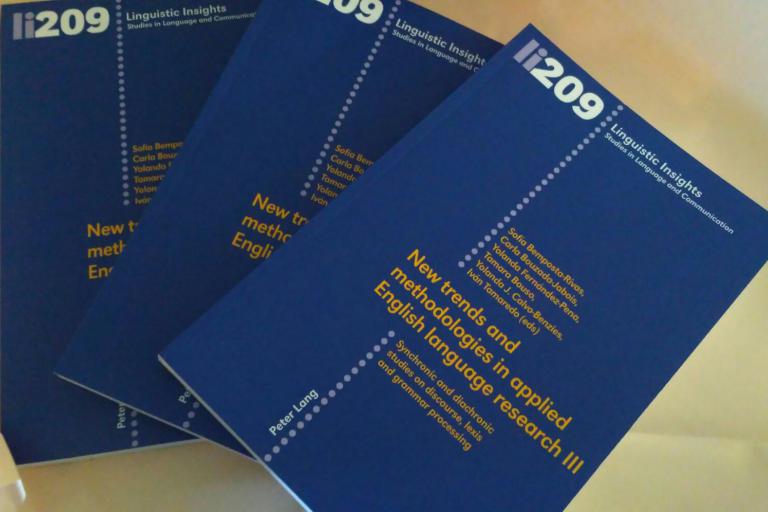On 12 and 14 April 2011 Carlos Acuña Fariña (University of Santiago de Compostela) taught a seminar on the grammar and the processing of agreement in English and Romance. Professor Acuña Fariña completed a PhD at Santiago with work on the grammar of apposition that would in time gain him an international reputation as one of the world's leading expert on the topic. He doubles as a psycholinguist (leads two current research projects on the processing of agreement) and has published in some of the most prestigious venues, such Cognitive Linguistics, Lingua or Cognition. He currently teaches English Morphosyntax in Santiago.
Abstract
Agreement has become a major challenge for both linguistic theory and psycholinguistics. As Corbett (2006: 116) has noted, it has moved from a peripheral position in grammatical studies to the centre stage. Most theories of language now recognise something equivalent to an agreement phase or operation in the creation of sentential messages, and disputes often arise only when discussing how to embed agreement computations inside a larger context containing further computations. Due to its pronounced redundancy and alliteration, agreement co-indexations are often only explainable if viewed as "dysfunctional", "manifestations of humans' delight in (...) form-focused activities" (Taylor 2002: 332). Yet agreement is present in over 70% of the world's languages and even in the languages where it is not so conspicuous, like English, its operations are central to the structure and the creation of predications (English speakers actually confront the requirements of number agreement at least once every 16 words or so, or once every five seconds; Eberhard 2005: 532-33). Furthermore, as Bock et al. (1999: 331) note, even 4-year-olds use correctly agreeing verbs over 94% of the time in spontaneous speech (Keeney & Wolfe, 1972): "This makes it all the more plausible to view agreement, in its typical manifestations, as one of the automatic mechanisms of normal language production rather than a nicety of carefully prepared speech". In this course, we will examine the psycholinguistic dynamics of agreement and ask ourselves questions like the following:
- Is agreement an essentially formal or an essentially conceptual phenomenon?
- Are the grammar of agreement and the processing of agreement 'in good agreement' with each other?
- Are there cross-linguistic differences in the way agreement is processed?
- Do we compute agreement differently for gender and number? For semantic gender and morphosyntactic gender?
- Does the mind, and the brain, react differently to agreement based on either semantic or formal regulation?
- Is the processing of agreement the same across domains?
The course introduces students into some of the latest experimental research on the topic, and will help them become familiar with the methodologies used in this field, such as 'eye-tracking' and E.R.P.







